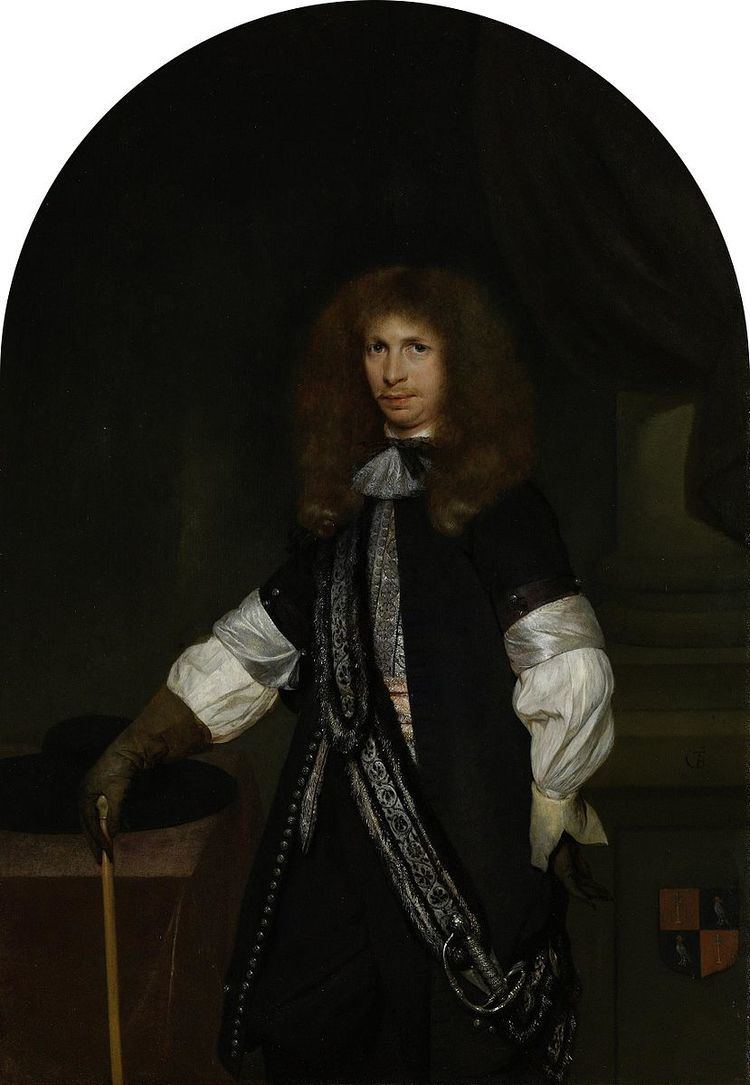Name Jacob Graeff | Parents Cornelis de Graeff Died April 21, 1690 | |
 | ||
Similar People | ||
Great-grandparents Diederik Jansz. Graeff Grandparents Jacob Dircksz de Graeff | ||
Jacob de Graeff (June 28, 1642 in Amsterdam – April 21, 1690), was a member of the De Graeff-family from the Dutch Golden Age. He was an Amsterdam Regent and held the titles as 20.th Lord of the Free and high Fief Ilpendam and Purmerland. Jacob de Graeff was a member of a family of regents who belonged to the republican political movement also referred to as the ‘state oriented’, as opposed to the Royalists.
Contents
Biography
Jacob was the son of Cornelis de Graeff and Catharina Hooft, and the younger brother of Pieter de Graeff. In 1648 Jacob laid the foundation stone for the new city hall on the Dam. Joost van den Vondel wrote a poem to Jacobs Foundation stone. During the summers the family spent a lot of their time at the Palace Soestdijk, and he and his brother played with the young William III of Orange – who later became King of England, Scotland and Ireland and stadtholder of the United Provinces of the Netherlands – at the lake and woods at Soestdijk. After he finished his studies at the University of Harderwijk he returned to Amsterdam. In 1666 he married to Maria van der Does. Maria died 3 months later and they had no children.
In 1672 Jacob became a member of the Government of the City of Amsterdam. He was a political advisor to his cousin Johan De Witt. In the rampjaar 1672, after the death of the brothers De Witt and the raise of the House of Orange, the republican-minded faction of the De Graeff family included Jacob and Pieter, their uncle Andries de Graeff and their nephew Lambert Reynst, lost their political positions. In 1674 Jacob sold the hunting lodge and its surrounding fields, now the Soestdijk Palace, for only 18,755 Guilder to William III, and became one of the princes captains in the battle at Reibach near Bonn. In the same year Jacob owned 260.000 Guilder. About that he was one of the richest persons from the Dutch Golden Age.
Jacob was like his father Cornelis a man who surrounded himself with art and beauty. He was an art collector and patron to some famous artists. Jacob was painted by Gerard Ter Borch, Jacob Isaakszoon van Ruisdael, Thomas de Keyser, Karel Dujardin and Jan Victors and sing by the poet Joost van den Vondel. Jacob owned the castle Ilpenstein. He died 1690; his tomb chapel is to be found in the Oude Kerk at Amsterdam.
